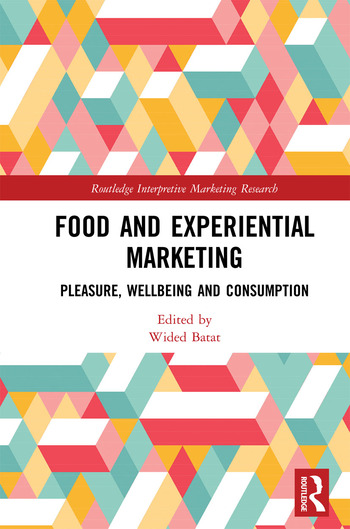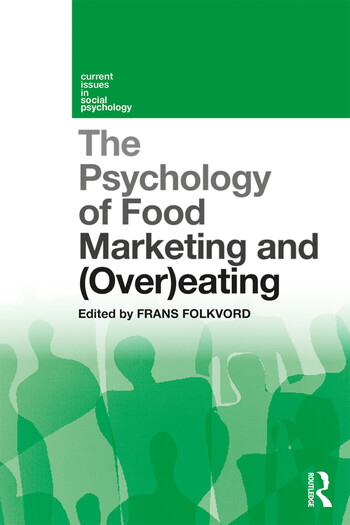2019 Predictions: Flavor & Food Trends
Consumers Embrace New Foods, Ingredients for Optimized Functional Benefits, Experiences
Food trends are stemming from the desire to improve all aspects of human experience

Know Brainer Foods expands brain-boosting line with a 16oz pourable keto creamer containing Non-GMO MCT oils and collagen.
PHOTO COURTESY OF: KNOW BRAINER FOODS (WWW.MYKNOWBRAINER.COM)
SRG’s Top 10 Cutting Edge Trends 2019 Report is the result of a deep and broad exploration of the global food landscape. An elite foodie group comprised of the internal SRG Culinary team, external Culinary Council; 175 food experts, sociologists, chefs, nutritionists and other trend-spotters; all gather clues from far and wide to piece together the food-trend story for the upcoming year.
Never has “hack-finding” been so prevalent in setting trends. In an era of uber-consumption of technology, it’s not surprising that trends across all segments, including food are stemming from the desire to improve all aspects of the human experience.
Feed Your Mind: Recent research supports a strong connection between gut health and cognitive function, placing neuro-nutrition top of mind. We’re starting to see a quorum of products across categories in CPG and foodservice; leveraging ingredients from antioxidant rich dark chocolate, to spearmint to MCT oil and “good fats,” to adaptogenic herbs and mushrooms. All of these ingredients are designed to provide clarity, balance, memory enhancement, and peace of mind.
About Face: The phrase “you are what you eat” has never been more front and center—especially if you are looking to feel young and beautiful. Ingredients like collagen, sea weed/algae, vitamin C and hyaluronic acid purport to not only keep skin, nails, and hair supple but to keep your gut lining fortified for that inner to outer glow. This past year, 2018, saw more than 3,000 new food products featuring collagen, according to Datassential.
Butter is the New Bacon: As the foundation of global cuisine from Indian ghee to classical French mother sauces, butter is not only a staple, but a craveable ingredient. Butter takes center stage on Instagram with drool-worthy coffee, breakfast, donut, and even burger offerings. It’s also popping up in the form of a butter bomb, the new chocolate truffle-style dessert for those on extremely low carb high fat diets like keto. Move over bacon, now there is something butter-ier!
Fughettabout Food: Despite having more choice than ever when it comes to food—some consumers, when faced with option overload and a shortage of time—seek to forget about food altogether by employing periodic fasting. Others are turning to scientifically formulated meal replacements that provide nutrition and satiety without the “hassle” of eating. Foodservice and CPG sell products to these “food avoiders” by creating high fat supportive snacks and nutrient-dense meal replacers.
Rooted and Ravishing: The plant-based revolution is here, get used to it! Diners are hungry for heartier veg-centric options that can replace the meaty, satiating bites they crave. From center-of-plate stars to stealthy swaps in favorite snacks, vegetables like cassava, Japanese yams, parsnips, jicama, and even the classic white potato are all stepping into the resistant-starch spotlight in delightful new forms.
Fermentation Without the Funk: Diners are moving beyond the functional benefits of bacteria to embrace the fermentation process of various molds and fungi for its delicious, savory effect. From Japanese Koji used to quickly age meats; to the cheesy, umami flavor of nutritional yeast; and the meat alternative of tempeh—all eyes are on fungal fermentation techniques that drive flavor forward.
Lettuce Be Fresh: The romaine lettuce scare of 2018 raised concerns about food safety, but also brought lettuce into the spotlight. We’re now seeing the spread of the salad staple, as lettuce is being juiced to form the basis for canned and bottled hydration beverages. Exotic varieties like celtuce and hydroponically grown lettuces are also showing up as call outs on restaurant menus by variety and grower.
A Grain of Truth: Eureka! Now that new information has been unearthed that indicates cavemen may have consumed grains, what’s a paleo or grain-free food tribe philosopher to believe? Believe this, ancient grains like fonio- “the new quinoa”—or new strains of grain like Kernza, the darling of the organic regenerative farming movement, offer nutritional benefits like vitamins, fiber, fats, and essential amino acids. Look for fonio to fill bowls and Kernza to sprout its way onto the cereal shelf in 2019 and beyond.
Bitter is Sweet
First came the kale love; then, brussels sprouts moved into the side dish spotlight. Now, a whole new crop of bitter veggies from broccoli rabe to dandelion greens, collards, and endive are appearing in dishes of all kinds. But it doesn’t stop there; from the seemingly endless supply of super hoppy IPAs to the rise in craft cocktail bitters, the flavor is making a splash in summer spritzes too. From salads to snacks and sodas, bitter is indeed sweet. Menu references to the term “bitter” have risen more than 22% in the past four years and is projected to grow an additional 18.1% in the next four, according to Datassential SNAP and Datassential Haiku.
Data Mining Dining
Want a customized dining experience? Artificial intelligence is the hot dish being served up in the food industry right now. This technology can be leveraged to foresee food and flavor trends happening in real-time. Tech companies like Spoonshot, Foodpairing, Analytical Flavor Systems, and FlavorWiki are employing machine learning to support new product and menu development to pinpoint everchanging consumer preferences as they happen.
Originally appeared in the December, 2018 issue of Prepared Foods as Optimized Eating.
Looking for a reprint of this article?
From high-res PDFs to custom plaques, order your copy today!








